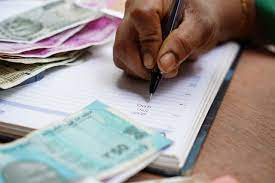Timothy 6:10: For the love of money is the root of all evil: which while some coveted after, they have erred from the faith, and pierced themselves through with many sorrows.
The last few years has seen a rapid shift in the digitization of many facets of our life. One key element is having a fully digital medium of exchange. Indeed, digital currency has the potential to completely change how society thinks about money. The rise of Bitcoin, Ethereum and thousands of other cryptocurrencies that exist only in electronic form has led global central banks to research how national digital currencies might work.
Digital currency is any currency that’s available exclusively in electronic form. Electronic versions of currency already predominate most countries’ financial systems. In the U.S.A., for instance, the physical U.S. currency in circulation is only about one-tenth of the overall money supply; the remainder is held in various bank deposits in electronic form.
But what exactly differentiates digital currency from the electronic currency? Currently, most American bank accounts is electronic and never takes physical form. Right now, you could go to an ATM and turn an electronic record of your currency holdings into physical dollars. Digital currency, however, never takes physical form. It always remains on a computer network and is exchanged via digital means. For example, instead of using physical dollar bills, you’d make purchases by transferring digital currency to retailers using your mobile device.
Of importance, the decentralized cryptocurrencies like Bitcoin and Ethereum, which store value but are not managed by any central authorities, governments and central banks around the world are researching the possibility of creating their own digital currencies, commonly known as central bank digital currencies.
In August 2021 the Bank of Jamaica (BOJ) minted Jamaica’s first batch of central bank digital currency (CBDC). CBDC is a digital form of central bank-issued currency and therefore is legal tender. It is not to be confused with cryptocurrency, which is privately issued, generally not backed by a central authority and does not perform all the essential functions of money. As legal tender, CBDC can be exchanged dollar for dollar with physical cash. Households and businesses will be able to use CBDC to make payments and store value, as now obtains with cash. CBDC is backed by the issuing central bank and is issued to authorized financial institutions to include deposit taking institutions on a wholesale basis, similar to what is being done with physical currency.
Additional sources: Benjamin Curry, Retirement and Investing Editor for Forbes Advisor and https://boj.org.jm






